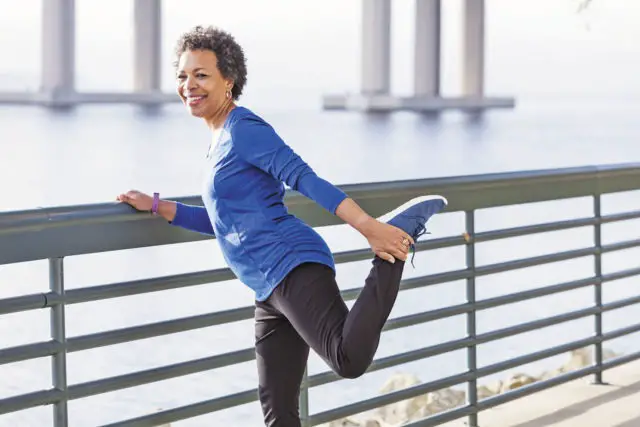Stretching is an important component of our overall health because it is an instinctive act of the body to maintain or regain balance. It consists of exercises that seek to stretch and relax muscles, joints, and nerves and improve flexibility.
It focuses on the muscles, stretching affects tissues, organs and nerves, thus improving breathing, circulation, and mobility and balancing muscle tone and strength.
It also contributes to relaxation, increases one’s body awareness, and ultimately decreasing stress. When you stretch you release a lot of tension. A rigid body is an expression of internal conflicts that can compromise your well-being.
In what way should you stretch and at what moment
You don’t have to be an athlete to stretch and also can take advantage of any time of the day available. If you feel that a muscle is tense, you can apply stretching by keeping the area elongated for 15 to 30 seconds and repeating the exercise three times.
If your work makes you sit all day in front of a computer, you need to release tension by rotating your wrists, stretching your arms and turning your neck, as well as performing pelvic and hip movements.
If you are a person who spends all day walking, it is best to perform domestic exercises at home by sitting on the floor, extending your feet and arms while raising and lowering the trunk.
Don’t forget that when you stretch you activate 72,000 spinal nerves. This helps a lot to improve blood circulation and decrease fluid retention.
Some recommended stretching exercises
For the thoracic area.
Expand your chest, breathing deeply for some minutes, because by sitting for a long time we tend to have it flexed.
For the neck.
It is good to rotate it and put the chin in. It produces a stretch in the upper part of the neck and the lower part of the skull.
For the shoulders.
Put your arms up and open them like you’re going to give a big hug.
For the legs.
The hamstrings (back muscles of the thigh) also shorten and create a stooped position. Exercise them by lying on your back, flexing your hips and stretching your knees as far as you can for several seconds. If your foot is tingling, stop exercising: you could have a sciatic nerve dysfunction.
Stretching is necessary but you have to do it carefully.

Although stretching is a natural exercise, it can be counterproductive when a person has a bodily injury in a certain area, manifests pain, or suffers from a disability. Stretching should not cause discomfort or numbness; in case someone feels joint pain or tingling, they should stop the process and consult a specialist to indicate the appropriate exercise.
It is the same with older people, especially if they are affected by Osteoporosis and loss of muscle volume. For them it might be better to walk and do strength exercises with small weights.
The important factor is to listen to your body; it will tell you what you need. Don’t overdemand yourself. You must know how far to go and the exercises must be always done progressively.
It seems like stretching is a simple act, without any repercussions on our organism, but we could already see how this stretching procedure provides us with great benefits that range from maintaining a good emotional state to our physical well-being. It is therefore important to include it in our daily routine and let it provide the best conditions for our body and mind.

